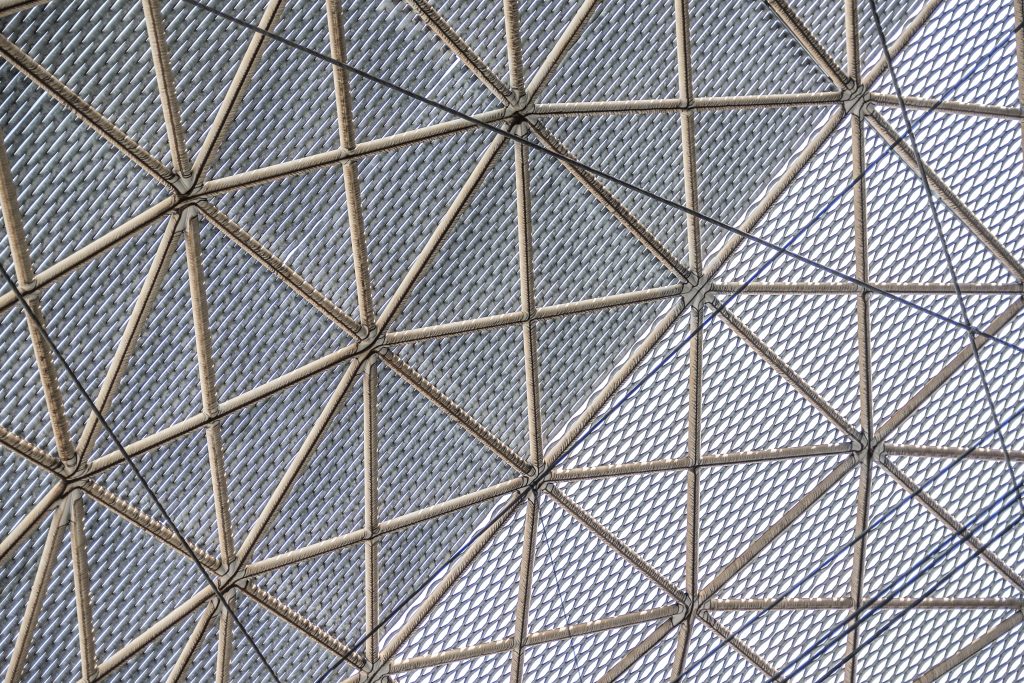Metal Framing Material: A Superior Alternative to Wood
Because it has several advantages over conventional wood framing, metal framing has become a very popular option in construction projects. Metal framing has gained popularity among builders and architects due to its excellent strength, adaptability, and longevity. This article will examine the advantages of metal framing, contrast it with wood framing, go through various metal framing materials, and cover numerous uses for metal framing. So let’s get started and learn why metal framing is transforming the building sector.
When it comes to constructing buildings, choosing the right framing material is crucial. The process of using steel or other metal materials for structural support is referred to as metal framing or steel framing. Due to its remarkable capabilities and advantages over conventional wood framing, it has experienced a major increase in popularity in recent years.

What is Metal Framing?
Metal framing involves the use of steel studs or metal members instead of wooden studs for structural support in buildings. Cold-formed galvanized steel sheets are rolled into predetermined shapes and sizes to create steel studs. These studs provide stability and strength to the entire building by acting as vertical supports for walls, ceilings, and roofs.
Benefits of Metal Framing
1.Durability and Strength
benefits. Metal studs do not age, break, or shrink like wood does. They are perfect for long-lasting constructions since they are resistant to rot, decay, and insect damage. Extreme weather, seismic activity, and large loads can all be tolerated by metal frame, guaranteeing the building’s structural integrity.
2.Fire Resistance
When compared to wood framing, metal framing offers higher fire protection. Because they are inflammable and do not aid in the spread of fire, steel studs. Metal frame can aid in containing the flames in the event of a fire, giving vital time for inhabitants to safely evacuate and minimizing property damage.
4.Termite and Pest Resistance
Termite infestations and insect damage can affect the structural integrity of wood structure. This worry is dispelled by metal framing since steel studs are resistant to termites and other pests. Builders can save money on repairs and guarantee a pest-free environment by selecting metal frame.
5.Moisture Resistance
When it comes to wooden constructions, moisture can cause warping, mold growth, and decay. Due to its excellent resistance to moisture, metal framing is a great option for locations that frequently experience high humidity or water exposure. It reduces the possibility of mold and mildew growth while preserving the building’s structural integrity.
Metal Framing vs. Wood
When deciding between metal framing vs wood, several factors need to be considered. Let’s compare these two popular options.
1.Cost-effectiveness
Compared to metal framing, wood framing is typically less expensive up front. Metal framing, however, offers significant cost savings when maintenance and long-term costs are taken into account. Metal constructions need fewer repairs and replacements since they are easier to maintain, last longer, and are less likely to sustain damage.
2.Installation Efficiency
The effectiveness of metal framing during installation is well established. Steel studs help for speedy and accurate construction because they are lightweight and simple to handle. Because metal framing materials do not bend or bow like wood does, the walls are straighter and the building is more precise. Shorter building timeframes and lower construction costs may result from this speed and accuracy.
3.Sustainability
Construction projects are increasingly taking sustainability into account. Metal frame is a resource-efficient choice since it makes use of recycled materials, which lowers the need for new resources. The environmental impact of metal frame is further reduced by the fact that it is recyclable at the end of its lifespan. The harvesting of trees for wood framing, on the other hand, might result in deforestation and ecological imbalance.
Types of Metal Framing Studs Materials
Metal framing studs encompasses various materials, each with its unique properties and applications. Let’s explore the most commonly used ones:
1.Steel Studs
The most common kind of metal framing is made of steel studs. They are extremely sturdy, resilient, and fire, pest, and moisture resistant. Steel studs come in a variety of gauges and diameters to meet various construction needs. They provide versatility and dependability and are commonly utilized in both residential and commercial construction.
2.Aluminum Studs
Another option for metal framing is aluminum studs. Due to their small weight, they are simpler to handle and install. Due to its non-magnetic nature, resistance to rust, and excellent malleability, aluminum is a versatile material for building. Aluminum studs, on the other hand, are frequently utilized in non-load-bearing applications and might not provide the same level of strength and longevity as steel studs.
3.Composite Studs
Steel and wood are combined to create composite studs. They are made of a wood or other composite material on top of a steel core. Composite studs give the stability and strength of steel with a surface that is similar to wood in that it is simple to screw, nail, and cut. These studs are perfect for projects that call for a balance between strength and adaptability.
Factors to Consider When Choosing Metal Framing
Selecting the appropriate metal framing material depends on several factors. Here are some considerations to keep in mind:
1.Project Requirements
Analyze the precise specifications for your construction project. Take into account elements like construction codes, acoustic performance, fire rating, and load-bearing capacity. Determine the best metal frame material for your project by consulting experts.
2.Structural Integrity
Strength and stability characteristics of metal framing materials vary. In order to be sure that the material you have chosen can withstand the loads and adhere to safety standards, evaluate the structural needs of your structure.
3.Environmental Impact
Select materials with a high recycled content and recyclability if sustainability is a top concern. Selecting environmentally friendly metal frame can support a greener building sector and further sustainability objectives.
4.Metal Framing Applications
Metal framing finds extensive use in various construction applications. Some common applications include:
5.Residential Construction
Single-family homes and multi-family structures both frequently use metal framing in residential construction. It provides stability, sturdiness, and design adaptability, enabling effective construction and customization in accordance with homeowners’ preferences.
6.Commercial Construction
Metal framing is commonly utilized in commercial buildings because of its ability to withstand large loads and comply with tight building regulations. Metal framing provides the necessary structural strength for large-scale projects including office buildings, retail enterprises, and industrial facilities.
7.Interior Partition Walls
Interior partition walls are typically constructed using metal studs. They enable for simple installation of plumbing and electrical systems and offer stability and sound isolation. Metal-framed partition walls provide architects more freedom to design practical areas inside buildings.
Challenges and Solutions in Metal Framing
While metal framing offers numerous advantages, it also presents certain challenges. Let’s explore some common issues and their corresponding solutions:
Thermal Conductivity
Because metal has a higher thermal conductivity than wood, more heat can be transferred. In order to mitigate heat gain or loss via the metal framing, builders can apply insulation materials or create thermal breaks.
Sound Transmission
Compared to wood framing, metal framing is better at transmitting sound. In order to lessen noise transfer between rooms, this can be addressed by adopting sound-dampening strategies such insulation, resilient channels, or acoustical barriers.
Corrosion Protection
When metal, especially steel, is exposed to moisture or chemicals, corrosion can occur. Metal framing can be made to last longer by employing protective coatings, galvanized or stainless steel components, or appropriate waterproofing techniques.
Metal framing has emerged as a superior alternative to wood framing, offering durability, strength, and numerous other benefits. In terms of resistance to fire, insects, moisture, and general durability, it outperforms wood. With a variety of metal frame alternatives available, builders can choose the one that best fits the needs of their individual projects.
Both residential and commercial building uses metal frame because it offers stability, efficiency, and design flexibility. Even while problems with thermal conductivity, sound transmission, and corrosion protection exist, they can be successfully solved with the right methods and supplies. Metal framing is positioned to play a crucial role in influencing the future architecture of buildings as the construction industry develops further.
FAQs
Is metal framing more expensive than wood framing?
Metal framing may have higher upfront costs than wood framing, but it offers long-term cost savings due to its durability and reduced maintenance requirements.
Are metal studs stronger than wood studs?
Yes, metal studs are generally stronger than wood studs. They offer enhanced structural integrity and are resistant to warping, shrinking, and pests.
Can metal framing be used for exterior walls?
Yes, metal framing can be used for exterior walls. Proper insulation and moisture protection measures are essential to ensure thermal efficiency and prevent moisture-related issues.
How long does metal framing last?
Metal framing can last for decades, with proper maintenance and protection against corrosion. Its durability makes it an attractive choice for long-lasting structures.
Is metal framing eco-friendly?
Yes, metal framing is considered eco-friendly due to its high recycled content and recyclability. Choosing metal framing can contribute to sustainable construction practices.

